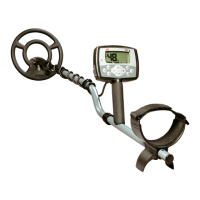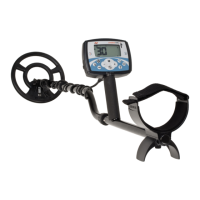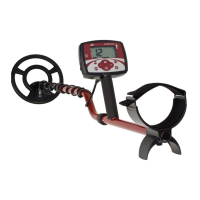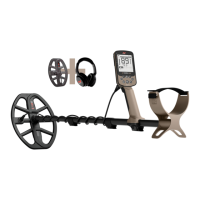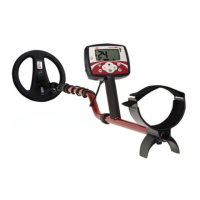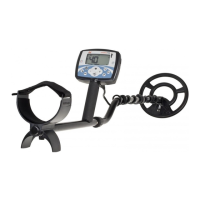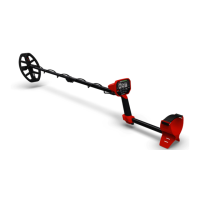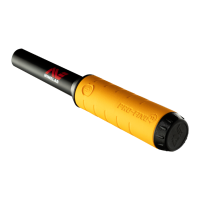34
CONTENTS
TARGET IDENTIFICATION NUMBER
Target Identification (Target ID) numbers range from
–19 to 99 with ferrous (iron) targets ranging from –19 to 0.
When a target is detected, it is represented as a number
that appears on the Target Identification Number field
on the display. This indicates the target’s ferrous or
non-ferrous properties for quick and easy identification.
For example, a US quarter has a Target ID of 89. This means
that each time a Target with an ID of 89 is detected, there is
a good chance that it will be a US quarter.
A Target ID Number appears when a target is detected. This example shows
the detection of a shallow US quarter. The corresponding Target ID Segment
flashes upon detection (flashing segment shown in grey).
The last-detected Target ID remains on the display for five
seconds or until another target is detected.
Note: Some non-ferrous targets display a negative ID if
there is an adjacent ferrous target.
If there is no detection or the detector passes over a target
that it rejects, the display shows two large dashes.
Two large dashes on the Target Identification Number
field when there is no detection.
DISCRIMINATION SCALE
The Discrimination Scale corresponds to the 119 Target IDs,
with each segments representing 4 Target IDs. Accepted
(detected) targets are shown as visible segments, and will
flash when a target with that ID is detected. Rejected (non-
detected or ‘blanked’) targets are turned Off.
Discrimination Segments are turned On (Accepted) or Off
(Rejected) to create Discrimination Patterns.
You can discriminate between desired and undesired
targets that appear along the Discrimination Scale.
Therefore you only hear target signals from those you want
to find, and unwanted targets are ignored.
You can do this by the following methods:
Accepting/Rejecting detected targets upon detection
using the Accept/Reject button (page 30).
Creating a discrimination pattern via Accept/Reject in
the Settings Menu (page 30).
Target Identification

